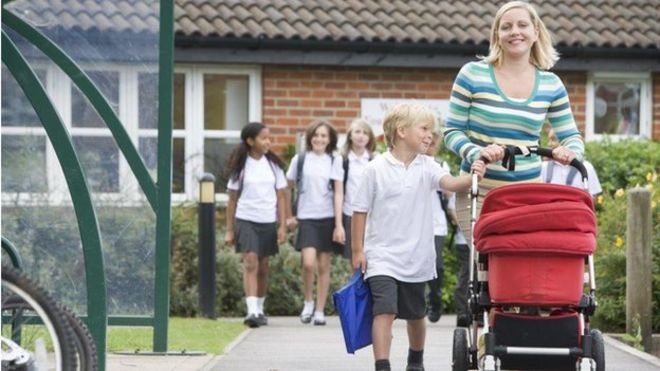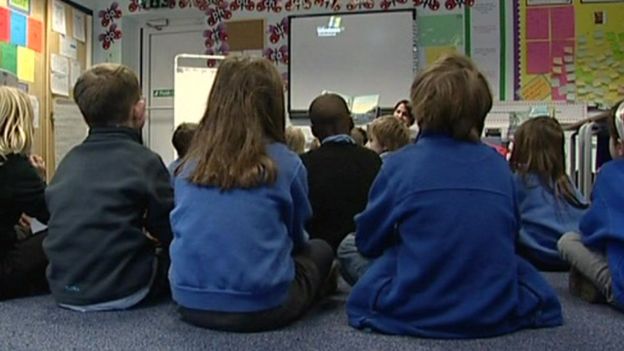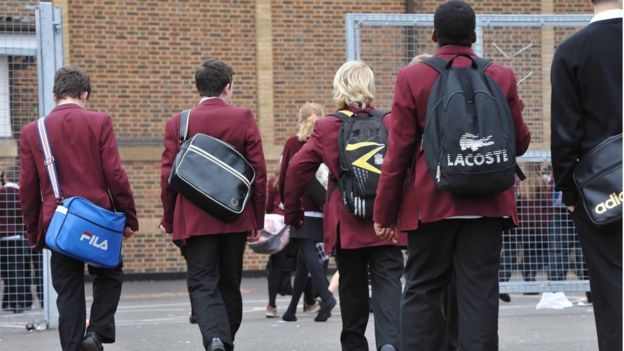- 15 January 2016
- Education & Family
-
(교육/영국) 영국의 혼란스런 학교 위치 정책이 아이들을 위험하게 한다아름다운 인생/교육 2016. 1. 17. 14:36
출처: http://www.bbc.com/news/education-35313804
Fragmented school places system 'harms children'
 Thinkstock
ThinkstockThe government says it wants to ensure a good school place for every child The system for creating new school places in England is fragmented and confusing, risking harm to children's education, head teachers have warned.
Lack of cohesive local planning means new schools are not always opened where there is most need, says the National Association of Head Teachers (NAHT).
The warning comes on the final day for parents to submit this year's applications to primary schools.
The government said it wanted to ensure a good school place for every child.
Labour Party analysis suggested half a million children were now in "super-sized" primary classes, and pressure on places was starting to hit secondary schools.
"The current system for planning new places is essentially broken," said shadow education secretary Lucy Powell.
"Some families applying today will go straight on to a waiting list with no offer of any school places, and soaring numbers of children will continue to be crammed into ever-expanding classes," she said.
'Squeezed into classrooms'
The Academies Act 2010 stipulated all new schools had to be academies or free schools, so local authorities lost their power to create new schools but retained responsibility for having enough school places locally.
This has meant local authorities, academies and central government take decisions on school places in isolation, says the NAHT.
The rise in pupil numbers will make it even harder for parents to secure school places, it adds.
Tangled web of school admissions
Analysis
By Hannah Richardson
There have been numerous attempts to simplify school admissions in England in recent years, such as introducing a single applications deadline and a single offers day. The School Admissions Code has also been tightened.
In the past, the allocation of the vast majority of school places was overseen by local authorities, based on school admissions criteria.
But with so many academies, free schools and foundation schools now controlling their own admissions, matters have become more complicated.
Now it is not just church schools which require supplementary information forms, but many of these other schools as well.
Although all schools have to publish their admissions criteria on websites, these can be hard for parents to interpret.
Key information on the chances of getting a place, which parents need to consider when making their choices, can sometimes only be obtained by calling around different schools.
Although local councils, which have a duty to ensure places for every eligible child, convey the details of offers of places to parents, they do not have the power to create new schools. And with places in short supply in many areas, the pressure is continuing to mount on the admissions system
Dominic Blackburn, father: "It is terrifyingly complex"
NAHT president Tony Draper, said there needed to be a local agency with "oversight and clout" to work alongside local authorities and make sure there were school places where they were needed.
Too many areas where children were currently being "squeezed into classrooms, taught in mobiles, taught in corridors, and that's not acceptable", he said.
He added that new free schools must be located where there was a need for school places, "not just at the whim of a group that want to build a free school in an area where there is already capacity".
The NAHT warned "over-stretching capacity" could cause teaching quality to drop and pointed out the government's own figures suggested at least 200,000 more primary and 80,000 more secondary places would be needed within five years.
Applying for schools in Scotland, Wales and Northern Ireland

There are different processes for applying for school places in Scotland, Wales and Northern Ireland In Scotland councils usually divide cities, towns and rural areas into catchment areas, with children in each catchment area usually attending the same local school, designated by the council.
But Parents also have the right to express a preference for a different school and the council must usually accommodate this if there are enough places there.
In Wales, parents apply to local authorities for places at community and voluntary controlled schools and must list schools in order of preference. Children whose parents have expressed preferences for particular schools get priority. Children may not get a place at their nearest school if their parents have not expressed a preference for it. For places at foundation schools parents must sometimes apply direct to the school.
In Northern Ireland parents list at least four preferred schools on a regional education authority form. All schools have admissions criteria to decide who to admit if they get more applications than they have places available. Parents are advised to check individual schools' admission criteria before applying.
The Local Government Association (LGA) wants powers to open new schools in England restored to councils.
It said some councils struggled to find sponsors for new schools, while academies, independent of council control, could be reluctant to expand to meet demand for school places.
"If they are not willing to expand, then powers to create new schools should be returned to local authorities," said Roy Perry, chairman of the LGA's children and young people board.
The LGA says councils have managed to create 300,000 extra primary places in recent years by increasing class sizes, converting non-classroom space and diverting money from repairs.

Secondary schools are beginning to feel the places squeeze, Labour says 'Funding doubled'
The Department for Education said 95% of parents had received an offer at one of their top three preferred schools last year, while the average infant class size had remained stable.
"The government doubled basic-need funding for new school places to £5bn between 2011 and 2015, helping create half a million new places since May 2010," said a spokeswoman.
The government had also opened more than 250 free schools, around three-quarters in areas facing a places shortage, she added.
"However we know more needs to be done, that's why we will now invest a further £23bn in school buildings up to 2021, creating 500 new schools in the next five years and 600,000 new school places."
A Conservative Party spokesman called Labour's statistics "misleading".
"At the same time as pupil numbers were booming, the last Labour government cut funding for school places by £150m, scrapping almost 200,000 places," he said.
"So rather than trying to scare parents with misleading statistics, they should be backing the measures we've taken to clear up the mess they left behind."
Nick Timothy, director of the New Schools Network, which represents free schools, said he believed they were the only way of meeting the rising demand for school places and improving standards.
"The vested interests attacking free schools today are simply wrong. The problem is not new free schools but those who seek to block new free schools for political purposes," said Mr Timothy.
'아름다운 인생 > 교육' 카테고리의 다른 글
(교육) 억만장자는 일반인보다 학벌이 더 좋을까? (0) 2016.02.25 (교육/영국) 잉글랜드의 교육제도 (영문 자료) (0) 2016.01.19 (교육) 호주에서 유학하려면 학비와 생활비가 얼마나 들어갈까? (영문자료) (0) 2015.12.22 (교육/동영상) 도큐멘터리: CIA의 비밀 실험 (영문 동영상 자료) (0) 2015.10.25 (교육) 클레오파트라가 뱀에 물려죽였다는 설은 옳지 않다 (0) 2015.10.24
